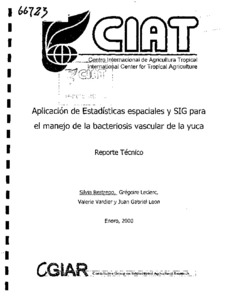Om inzicht te krijgen in de behoefte aan geo-informatie over het functioneel bodemgebruik onder potentiële gebruikers is een ondersteunend beslismiddel ontworpen. Het betreft een zogenaamde kaartenwaaier, die zowel op papier als op internet beschikbaar is gemaakt. De indeling van de kaartenwaaier is gestructureerd rond de invalshoek, de basisgeometrie en de functiegroep (of kaartlaag) en gaat uit van de bestaande basisgeometrieën LGN, TOP10-vector en CBS-bodemstatistiek.
Search results
Showing items 1 through 9 of 11.-
Library ResourceReports & ResearchDecember, 2000
-
Library ResourceReports & ResearchDecember, 2000Kenya
Preliminary findings on the effects of land use in the Masinga Dam catchment, Kenya, on the storage capacity of the reservoir are presented. Remote sensing and GIS techniques, supplemented with ground reports, were used to determine areas most susceptible to erosion. A representative catchment was then chosen for rainy season monitoring of soil loss, river suspended sediments and discharge response to rainfall. In addition, Gerlach-type traps were used to evaluate erosion rates under different crop covers and slope gradients.
-
Library ResourceReports & ResearchDecember, 2000Netherlands
Bij steeds meer beleid en wetgeving spelen regelingen een rol die betrekking hebben op individuele percelen. Voor de uitvoering en evaluatie van deze regelingen bestaat er daarom grote behoefte aan perceelsgebonden informatie. Om een efficiënte verzameling, opslag en verwerking van deze informatie mogelijk te maken speelt geografische vastlegging van de grenzen van percelen een belangrijke rol.
-
Library ResourceReports & ResearchDecember, 2000Spain
The increasing popularity of geographical information systems (GIS) has at least three major implications for land resources survey. Firstly, GIS allows alternative and richer representation of spatial phenomena than is possible with the traditional paper map. Secondly, digital technology has improved the accessibility of ancillary data, such as digital elevation models and remotely sensed imagery, and the possibilities of incorporating these into target database production.
-
Library ResourceReports & ResearchJanuary, 2000Sub-Saharan Africa, Mozambique, Tanzania, Uganda, South Africa, Côte d'Ivoire, Niger, Europe
Series of papers on land tenure issues including: Piloting local administration of records in Ekuthuleni, KwaZulu-Natal, by Donna Hornby (AFRA, South Africa)Ivory Coast’s Plan Foncier Rural: lessons from a pilot project to register customary rights, by Camilla Toulmin (IIED) Customary land identification and recording in Mozambique, by Chris Tanner Supporting local rights: will the centre let go?
-
Library ResourceReports & ResearchSeptember, 2000Africa
Looks at the problems of creating a stratum of black commercial farmers in South Africa in the light of historical experiences in Kenya and Zimbabwe. Argues that this will be a daunting challenge since apartheid tried to destroy black commercial farmers. The double challenge will be to unlock historical structural constraints within the agrarian economy and to reorient the current macro-economic climate to be more responsive to the needs of small-scale black farmers.
-
Library ResourceReports & ResearchMarch, 2000Kenya, Africa
Examines evolution of land tenure reform in Kenya since Swynnerton Plan of 1954 with particular emphasis on the poverty impacts of titling. Concludes that land titling risks a negative impact on the poor.
-
Library ResourceReports & ResearchDecember, 2000Honduras, Nicaragua, Central America, South America
During the week beginning the 25th of October 1999 in Honduras and Nicaragua, Hurricane Mitch devastated large areas in the cities, razed bridges and highways, and left some regions isolated, blocking aid efforts. The production of basic grains that are obtained in the hillsides, where the poorest farrners live, suffered serious damage. Winds and floodwaters badly hit the productive areas where some farmers were harvesting their crops and others were planting. Great losses were caused, affecting the economy and production of food of these two countries.
-
Library ResourceReports & ResearchDecember, 2000
-
Library ResourceReports & ResearchJanuary, 2000Chile
Increasing competition for water across sectors increases the importance of the river basin as the appropriate unit of analysis to address the challenges facing water resources management; and modeling at this scale can provide essential information for policymakers in their resource allocation decisions.
Land Library Search
Through our robust search engine, you can search for any item of the over 64,800 highly curated resources in the Land Library.
If you would like to find an overview of what is possible, feel free to peruse the Search Guide.







